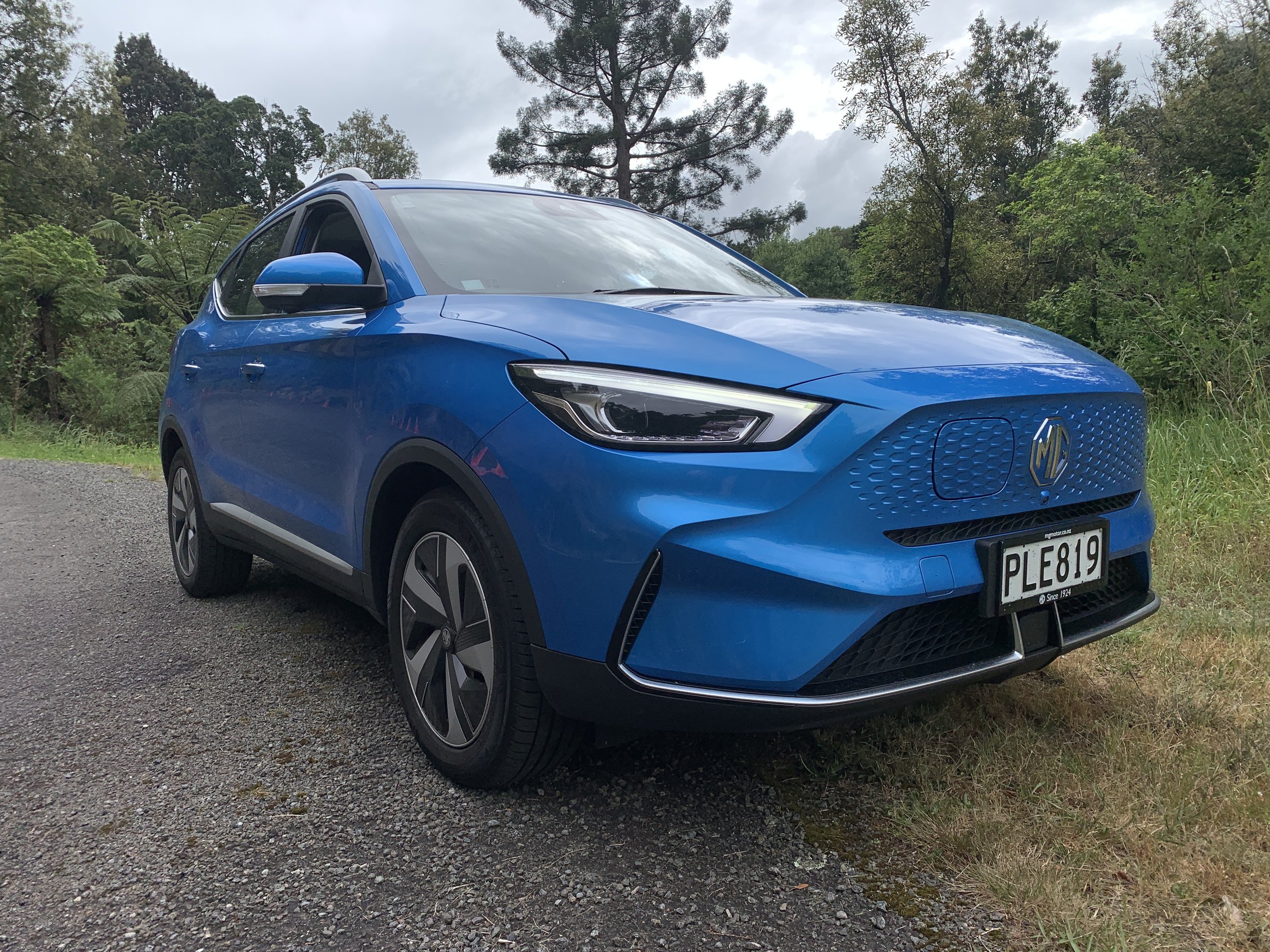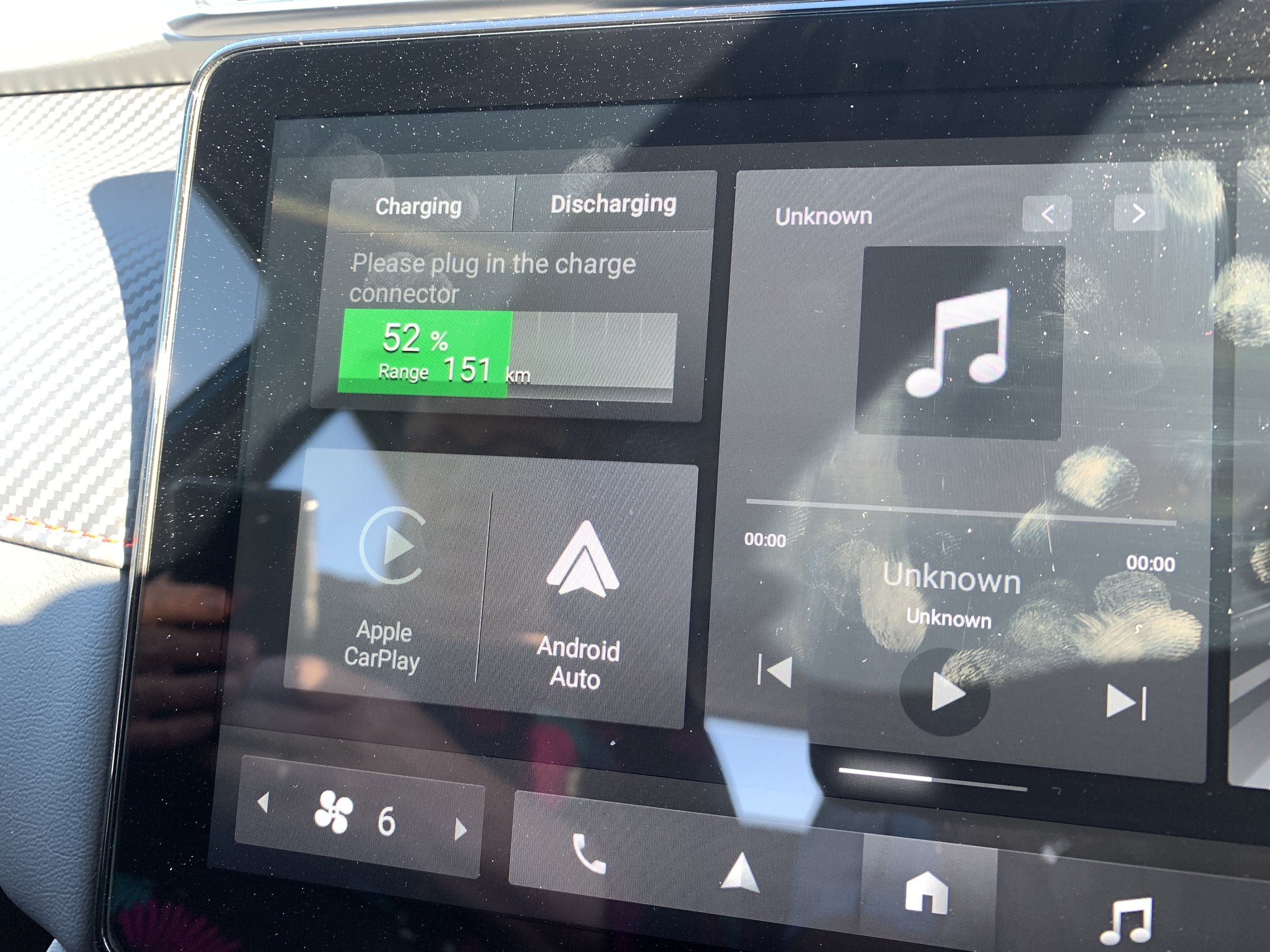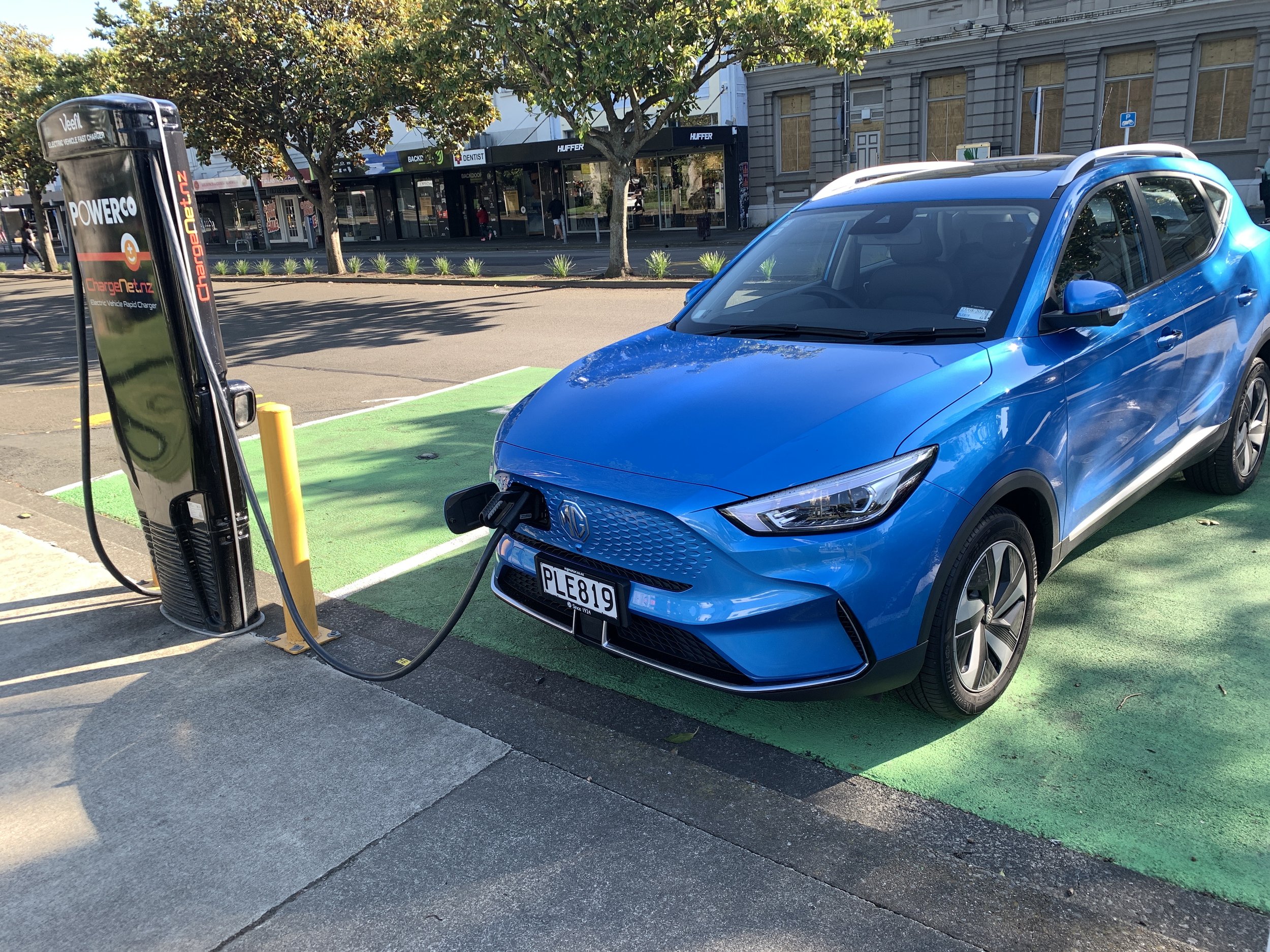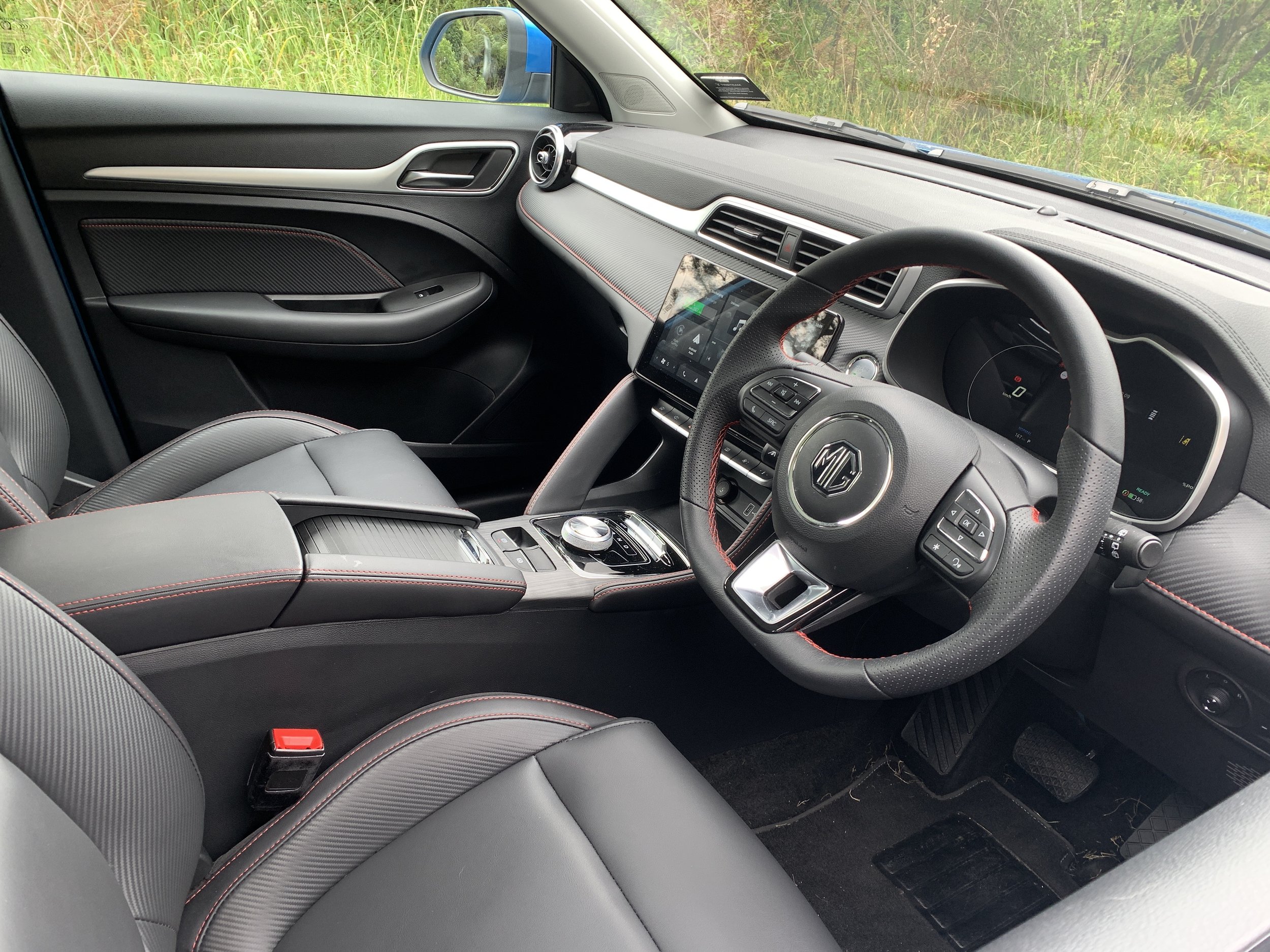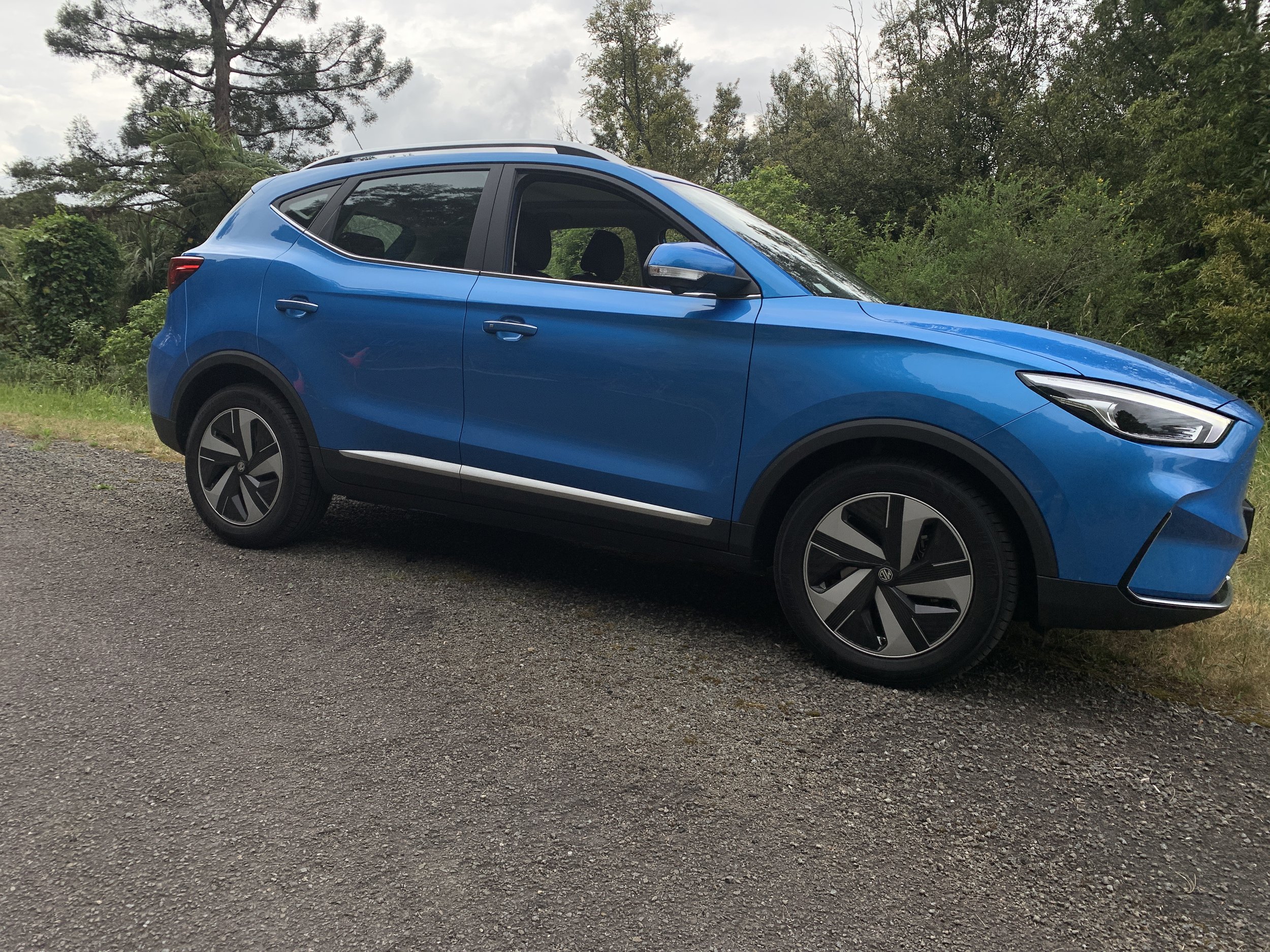MG ZS EV Essence roadtest review: Cents and sensibility
/If sheer affordability counts above fashionability, it’s still the top player.
Price: $53,990.
Engine: Synchronous electric motor, front-wheel-drive, 130kW, 280Nm. 0-100km/h, 8.4 sec.
Transmission: Single speed.
Fuel and economy: Electric, 17.1 kWh/100km
Dimensions: Length, 4314mm; width, 1809mm; height, 1644mm.
We like: Still the country’s most affordable new electric vehicle but more than a cut-price competitor; improved infotainment system.
Not so much: Would be stronger with larger battery; styling changes don’t diminish dated feel; not a dynamic involver.
AS everyone should by know, in an internet age there are few secrets any more.
So it goes with the ZS EV, the car that has done much to re-establish MG’s relevance and bring the historical octagonal badge into mainstream acceptance.
MG has made clear it plans to replace all current cars by 2025. You can now read up about the new ZS – and, by that, I don’t mean the facelifted edition that’s subject of today’s test but the one beyond, potentially set to unveil internationally within 12 months.
It might quite possibly uncloak internationally when we’ll see the MG 4 (July’s the favoured month for that), whose details are already doubtless being studied by potential Kiwi customers, as it’s already on sale in the United Kingdom. The ‘Four’ is a car of ultra-importance to MG, being the first from this ‘British by birthright, China-reborn and residing’ marque that’s designed and engineered to be an electric car right from its outset.
The new ZS might be the second in that lineage. It also adopts the next-generation MSP platform and follows the funkier design trend set by the smaller sibling.
We know this much because patent drawings of the next ZS have, either by intent or accident, already hit the web. There still many assumptions: That it’ll have the same sort of minimalist interior as the smaller car, that it’ll, deliver with all-wheel-drive (the current one is front-drive), that it’ll have bigger batteries. MG says MSP underpinning can support battery sizes of up to 150kWh – that’s almost three times the optimal for the present ZS here.
All this sounds great. But at what cost? It’s commonly held that the key appeal to ZS EV in current form has been its status as the lowest-priced brand-new electric car in the market. That pitch immediately struck a chord with Kiwis and it’s a status the freshened one maintains.
The MG 4’s pricing has yet to be announced, but overseas the cheapest MG 4 is not less expensive than the base ZS, a physically larger car.
Will the next MG ZS EV also move up the pricing scale? It logically might well, because it’s a whole new thing and, of course, even though battery cost per kWh appears to be lessening, the constituent components for electrics are expensive. Then again, China appears to be perhaps the cost-effective source point for EVs and brands there are so hungry to conquest they seem keen to play a long game. Pricing to win share with assurance that, the greater the volume, the most cost-effective the strategy.
That policy seems to be driving the BYD Atto 3; the MG’s first patent direct competitor. It’s also a new-era car, with a new-generation battery; a generation ahead of the ZS EV.
It costs more, but not a lot; much less than you’d think given the technology gap. Its solid start in this market suggests Kiwis are happy with that. With NZ clearly seen as a tasty export destination for competitive Chinese manufacturers, we’re bound to see more rivals, very likely set to pitch just the same way. The Ora Good Cat from Great Wall Motors is on the prowl. How long before Nio, Xpeng, Zeekr and Aiways join the game?
While affordability remains the ZS’s singlemost powerful inducement, the cosmetic changes and it having perked up on the power front being nice-to-haves as well are clearly also important. But does the powertrain still stack up?
Regardless most EVs are only use for short-haul, electric range can make or break a model’s standing. The current choice of a 50.3kWh, liquid-cooled, lithium-ion battery driving the front wheels via a single electric traction engine is good for 130kW and 280Nm. Those outputs are up by about 25 percent over the previous model and cited range of 320kms is a welcome step up from the far more middling 263km for the original.
Even so, given the BYD demonstrates a significant edge, for little more spend, it is surely hardly churlish to suggest the ZS could have made a stronger case for itself still were it to have a touch more than it delivers. Time over on test there was cause to think it’d be more competitive now with the ‘Long Range’ 72kWh battery availed overseas, which offers 440kms. Even with the new optimal, and the maker’s promise it having quicker recharging capabilities, it just didn’t suit for a last-minute run that would have put 340kms’ on the clock, because the drive distance would have required at least an hour’s down time recharging. Time that just wasn’t available on that day.
Thought it’d do better with more was also mulled by a family I know who are in the remarkable position of owning both this model, in pre-facelift form, and its biggest rival of the moment.
The mum and dad have the Atto 3, the daughter and son-law-law the MG. They each frequently drive the other’s cars. It was worthwhile getting their thoughts when testing the ZS EV in its top-flight format.
These people are hard-out EV nerds; committed to never going back to petrol. Fundamentally, they feel the cars they have now are better choices than anything fossil fuelled owned previously.
Nonetheless, they’re pragmatic, unafraid to recognise shortcomings. For driving, they go for the BYD. On value? The ZS remains better. Even the BYD buyer agreed to that.
Me too. The MG isn’t a ground-breaker and this stint enforced that, in overall ethos, it’s an honest car, yet clearly a conservative choice. As much as the freshen and its technology bundle, including vehicle to load capability that enables it to power external electric devices and cellphone interaction, are going to keep it on many shortlists, age-related design limitations (such as the lack of reach adjust for the steering column) require acceptance. Likewise other costing considerations also reflective of its design age and the tastes of its home market. It’s perhaps designed for an older, more sensible clientele than the Atto 3 – no (guitar) strings attached here nor any funky interior trim materials or colours. It’s tidy, but is also staid. It’d be great if the design team loosens their collars for the next one.
Still, it is a genuine five-seater with a good-sized cabin and reasonably decent practicality. Boot space is improved by a dual floor load space with two levels, plus the 60:40 split-folding rear seats tilt forward (but not flat) to increase the capacity.
It retains three drive modes: Eco, Normal and Sport with the latter imbuing a more energetic step. It’s not blisteringly quick, but overall the oomph is rather m,ore obvious than comes from the type’s rather tepid petrol engine.
if needed to make a quick overtake, there’s enough here. Taking 8.4 seconds to reach 100kmh from rest is respectable enough for a car of this size.
Manufacturing costs remain high for electric vehicles, that’s why the ZS EV costs so much more than the petrol. But you get a better experience. The EV drivetrain is a whole lot more refined and smoother. It’s not always the quietest electric car – there’s some whine - but the performance and refinement is more than adequate considering the price.
It's simple and easy to get around in; fine around town, unremarkable elsewhere. MG’s past status as a sporting brand wasn‘t embraced hugely here. Most bumps are dealt with by the soft suspension; the drawback is that, on country roads particularly, it’s not the greatest handler. The dynamics are secondary to ride comfort. It can feel slightly wayward at times, with a bit too much body lean.
There are different levels of regenerative braking and my own feeling is that it’s pretty good. In its strongest mode, it is akin to one-pedal braking and, at urban pace, I found it almost possible to bring it to a stop without touching the brake pedal. Remarkably, the ZS owner believes the original car was more forceful still – a sentiment that the local dealership agreed with. Has it changed?
ZS achieving active emergency braking with pedestrian and cyclist detection, lane keep assist with lane departure warning, traffic jam assist, intelligent speed limit assist and intelligent high beam assist as standard is also beneficial.
These are grouped under the umbrella of 'MG Pilot'. Complementing the rear parking sensors is a 360-degree camera system, 17-inch alloy wheels and electrically adjustable and folding door mirrors.
The new look is engaging, but is it enlivening? The revisions have tidied up one or two areas. Redesigned headlights present a rather different running lamp signature to the previous look and what was the front grille element is now a dimpled body-coloured panel that carries the latest logo. The battery charge port cover is more easily accessible now and seems much more robust. Yet it isn’t any more handsome overall in any particular way.
The 10.1-inch touchscreen is easily the most modern inclusion in a cabin that isn’t brimming with superfluous garnishes; I was stunned that my ZS owner pals weren’t as smitten with it as I was. He’s a computer programmer so is well used to working with screens. From my view, the one it has now is considerably better than the original’s, not just in design but also in reactivity. The old one was a drudge and sometimes froze up.
Here navigation still seems slow, so it’s good MG provides Android Auto and Apple CarPlay software as standard. Plus the camera views are still rather murky.
The main instrument panel is also an all-digital affair that has all the relevant driving information. And I do mean all. To cram it all in, some data is rendered in such small fonts it’s not at all easy to read at a glance. A constant readout showing the percentage of battery charge remaining is a useful element.
All of the controls and buttons, including those on the multifunction steering wheel, seem easy to use. Having a rotary controller for selecting forward or reverse gears frees up space around the centre console and makes it easier to access the USB ports.
The Essence seems a better buy than the base car, as for a relatively modest price lift it lends a lot of incremental ‘nice to have’ stuff you might want. Like the wireless phone charger. The upgraded six-speaker audio system is also far better than the base unit. But there’s cost constraint occurring here. Though the climate control now has a dust/pollen filter, it’s still single zone even in the plush setting.
The opportunity for low-cost electric SUV practicality and comfort remains a plus point, so too the quality of its build. MGs are probably better constructed under Chinese stewardship than the cars from the final period of Morris Garages’ ever were.
Making the ZS a bit more exciting is a challenge yet to be met, but from the looks of it, the next car could well tick that box.
However, the EV sector is clearly the place of fastest change and technology gain; it’s probable every year remaining in this decade could well bring a new hero.

